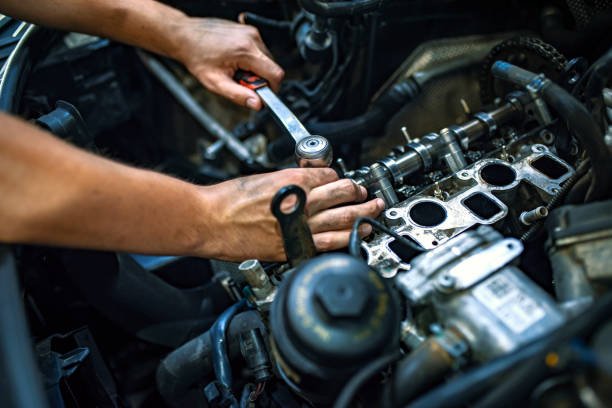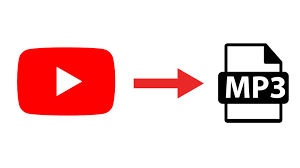Having a car is extremely convenient for getting around, but what happens when that vehicle gets into an accident? It likely sustains some type of damage that needs to be repaired by professionals. When this occurs, it’s important to know what to expect from the auto body repair process.

Assessing the Damage
The first step is to thoroughly examine the vehicle to identify all areas that were impacted. Some may be obvious, like dents, scratches and broken parts. However, there could also be less visible damage underneath the body panels or mechanical issues that arose from the collision. A comprehensive damage analysis is crucial for understanding the full scope of repairs needed.
With major damage, the vehicle may need to go on an alignment rack for a closer inspection. This allows the technicians to check that the frame and suspension components are still straight and operational. If the frame incurred any warping or twisting, that will need to be corrected before other repairs can be accurately made.
Working with the Insurance Company
Most auto body work will be paid for by insurance after an accident. The shop will communicate with the insurer to provide their evaluation of the damage and recommended repairs. This helps the insurance company determine if the estimate is in line with their own assessment.
There may be some back-and-forth negotiation on repair costs and procedures. A reputable shop like auto body shops St George will justify all of their recommendations and fight for what is truly needed to restore the vehicle properly.
Interesting Read: Unlocking the Potential: Harnessing the Power of Plant-Based Nutrition
Parts Procurement
Once the insurance estimate is approved, the shop can order all the necessary replacement parts. Body panels, lights, mechanical parts and interior trim pieces may all need to be replaced. The shop works with various suppliers to source original equipment manufacturer (OEM) and quality aftermarket parts.
For older vehicles, some parts may be discontinued. In these cases, the shop may need to track down usable parts from salvage yards. This can cause delays in starting repairs, but finding authentic components is important.
Body Work
The meticulous body work begins by taking the damaged panels off the vehicle. They are unbolted, unclipped and detached from the structure so the technicians have full access. The panels are inspected to determine which sections can be repaired and which parts are too far gone and need replacing.
Repairable areas are worked by hand using specialized tools to massage out dents or recrease crumpled sections. Body filler, primer and paint are then applied to restore a smooth finish. For severely damaged panels that cannot be fixed, new replacement parts are ordered and installed once they arrive.
Structural Repairs
Sometimes the underlying structure gets bent out of shape from a heavy impact. Pulling it back into proper alignment is critical so all the body panels sit correctly once reattached. This realignment process takes time and expertise. Specialized racks are used to systematically bring the frame, unibody and suspension mounting points back to their original specifications.
Poor structural alignment will lead to ill-fitting panels with large, uneven gaps. It can also cause tire wear issues and unstable handling if not corrected. Proper measuring equipment and training is needed to perfectly realign modern vehicle frames.
Mechanical Inspections
Collisions often damage more than just the external body panels. The force can knock wheels out of alignment, warp rotors, upset suspension systems and cause leaks. Test drives and computer scans check for any underlying mechanical issues.
The engine, transmission, steering, suspension and brakes may all need repairs to ensure safe operation after the accident. A comprehensive mechanical inspection ensures no problems are missed. The goal is to have the vehicle drive and handle exactly like it did before the crash.
Read More: Choosing the Perfect Shower Pan for Your Bathroom Remodel
Dent Repair
Minor dings and dents can often be gently massaged out from behind the panels. Specialized tools and techniques allow the metal to be flexed back into shape without cracking the paint or leaving distortions. This minimizes the need to fill, sand and repaint large areas.
For creases or more pronounced dents where some paint cracking is unavoidable, the damaged section needs to be sanded and filled with body filler. This is smoothed and leveled before priming and fresh paint. Care is taken to blend the new paint into the existing finish.
Paint Matching
Matching the new paint to the undamaged sections of the vehicle is an art form. The shop will use a color scanner to analyze the paint formula and accurately recreate the original hue and finish characteristics. Paint is then mixed on-site and sprayed onto test panels first to verify an identical match before applying it to the vehicle.
Metallic and pearlescent finishes can be especially tricky to blend seamlessly. A top-quality paint team takes pride in flawlessly matching the color, texture and sheen for a factory-fresh appearance.
Rust Protection
On older vehicles, a collision may damage or chip away the existing rust protection coatings. This exposes bare metal that will quickly start to oxidize. Once repairs are completed, all inside cavities and seams are re-treated with protective compounds to stave off corrosion. This helps safeguard all the work that went into repairing the vehicle.
Quality Control
Throughout the repair process, the work is continually inspected to ensure proper fitment, gaps, flush surfaces and quality workmanship. Once the painting is done, the finish is scrutinized under different lighting conditions. The technicians look for any drips, runs, debris or uneven blending that requires touch ups.
Careful quality control ensures all repairs meet strict standards. The shop’s reputation is on the line with every job that returns to the owner. Each vehicle is treated with meticulous care and attention to detail from start to finish.

Customer Service
Beyond the technical skills, customer service and communication also set professional auto body shops apart. Explaining repair procedures, managing insurance negotiations, providing status updates and answering all questions is just as important as doing quality work. The process can be confusing and stressful for vehicle owners. An experienced shop handles the customers as well as their cars.
Finding a Reputable Shop
Don’t wait until an accident to start researching auto body businesses. Having a go-to repair shop already in mind provides peace of mind. Look for an established company with a track record of doing reliable work for reasonable rates. Speak to people in the community to get personal recommendations. Check out online reviews and the Better Business Bureau for feedback.
While nobody wants to be in a collision, choosing the right auto body shop will provide confidence that any necessary repairs will be done right. A bit of research and preparation makes the process smoother when the need inevitably arises. Putting in a little work upfront pays off in the end.






[…] Also Read: The Ins and Outs of Auto Body Repair […]